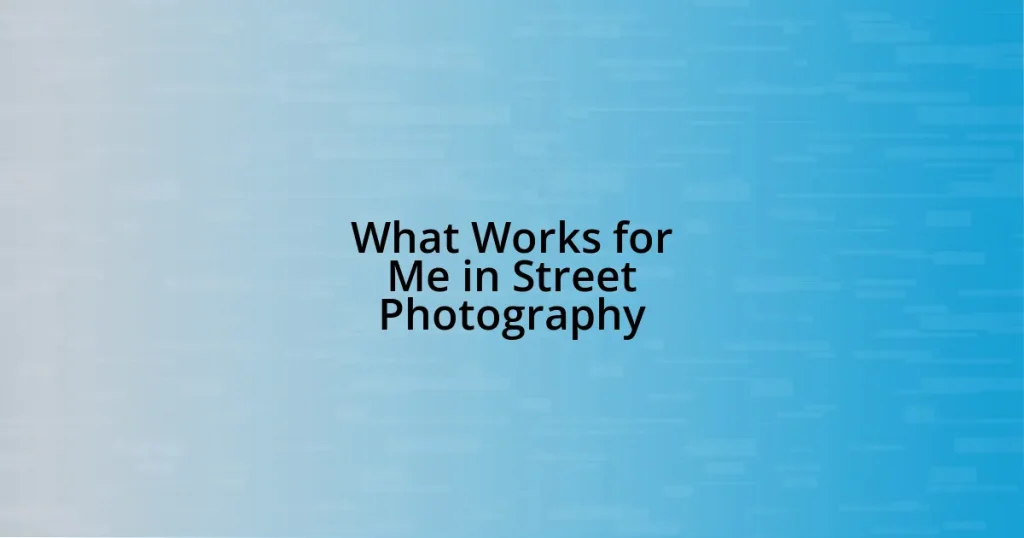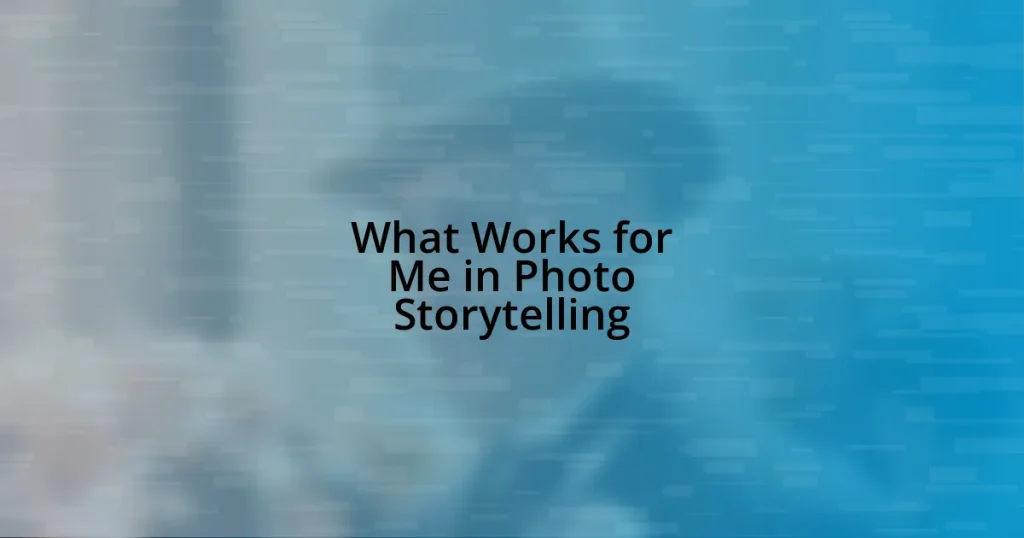Key takeaways:
- Vulnerability in portraits reveals complex emotions and fosters deep human connections.
- Techniques like engaging in conversation, observing body language, and encouraging spontaneity enhance the authenticity of subjects’ expressions.
- Building a strong connection with subjects through active listening and shared experiences is crucial for capturing genuine moments.
- Natural lighting and embracing unplanned moments can elevate the emotional impact of portraits.

Understanding vulnerability in portraits
In my experience, vulnerability in portraits often unveils layers of emotion that we might not otherwise recognize. It reminds me of a time when I was photographing a friend who had just gone through a tough breakup. As we captured those raw moments, I noticed how her guard slowly came down, revealing a profound sense of sadness intertwined with resilience. Isn’t it fascinating how a single photograph can encapsulate such complex feelings?
Looking at portraits, I often find myself pondering the balance between strength and fragility. When I see an image that depicts vulnerability, I can almost feel the story behind the gaze. This connection draws me in; it prompts me to ask what the subject was going through at that moment. Have you ever experienced that feeling where a portrait evokes your own memories or emotions?
Ultimately, vulnerability transforms a simple visual into a powerful narrative. I’ve realized that capturing this essence often requires the photographer to be equally open, allowing for a shared space of trust. When I allow myself to be vulnerable alongside my subjects, the portraits we create reflect a deep human connection. It’s this interplay of emotions that makes the art of portraiture so profoundly impactful.

Techniques for capturing genuine expressions
When it comes to capturing genuine expressions, I find that creating an authentic environment is crucial. One technique I love is to engage in casual conversation before shooting. I remember a time when I was photographing an artist in her studio. Instead of immediately jumping into the session, I asked her about her latest project and let her show me around. This relaxed our interaction and enabled her to express herself naturally in front of the camera.
Another invaluable technique is to observe the subject’s body language. I often look for subtle shifts like a slight tilt of the head or a softening of the gaze that signal deeper emotions. During a family portrait session, I noticed a little girl playing with her pigtails while her parents exchanged glances filled with love and laughter. Capturing that unguarded moment not only showcased her personality but also highlighted the warmth of their familial bond.
Finally, allowing for spontaneity can produce some of the most genuine expressions. I recall a time when I was photographing a couple and suggested they dance for fun. It led to a burst of laughter that transformed the entire mood of the session. Those candid moments often reveal a pure joy that I strive to capture, reflecting the true essence of the subjects.
| Technique | Description |
|---|---|
| Engage in Conversation | Create a relaxed atmosphere through casual dialogue. |
| Observe Body Language | Focus on subtle shifts to uncover deeper emotions. |
| Encourage Spontaneity | Allow for playful moments to capture natural expressions. |

Building a connection with subjects
Building a connection with subjects is at the heart of capturing vulnerability in portraits. I often take the time to truly listen to my subjects, which helps foster an environment where they feel seen and valued. For me, it’s all about understanding their stories. One memorable instance was during a shoot with a shy teenager. As we chatted about her interests, her laughter broke through her initial reserve, allowing me to capture a radiant smile that spoke volumes about her inner strength.
- Active Listening: Validate your subjects’ feelings through genuine interest in their stories.
- Create Comfort: Use shared experiences to help subjects feel safe and relaxed.
- Shared Vulnerability: Open up about your experiences; it creates a reciprocal trust that encourages authentic expression.
Another approach I love is using visual aids, like old family photos, to kickstart a dialogue. I once brought along my own childhood picture to share with a father and son during their shoot. This not only sparked laughter and heartfelt memories but also bridged a gap, allowing the father to open up about his hopes for his son. That connection transformed our session from just another photo opportunity to a heartfelt exchange, resulting in portraits that were filled with genuine emotion and a sense of legacy.

Analyzing impactful portrait examples
Reflecting on impactful portrait examples, I can’t help but think about how they often tell profound stories. I once came across a stunning photo of an elderly man seated on a park bench, with deep lines etched into his face that revealed years of wisdom and experience. The sunlight caught his eyes, which seemed to twinkle with untold tales. Isn’t it fascinating how a simple portrait can encapsulate a lifetime of emotions?
In another instance, I remember seeing a portrait of a young activist at a rally. The intensity in her gaze and the determination in her stance sparked an intense connection for me. It was as if she was inviting the viewer to share her mission and emotions. Have you ever felt moved by a photograph to the point where you wanted to know the subject’s story? That innate ability of a portrait to evoke curiosity is what I strive to capture when I’m behind the lens.
Lastly, the power of vulnerability can be beautifully illustrated in portraits that showcase raw emotions. I’ll never forget a photo of a mother cradling her newborn, tears of joy streaming down her face. That moment was a perfect blend of love and tenderness, evoking a sense of intimacy that felt almost sacred. When I create portraits, I hope to reach that level of authenticity, making the viewer feel like an unseen witness to a personal moment. What stories do you think portraits can tell?

Tips for creating authentic portraits
One of my favorite techniques for creating authentic portraits is to engage with my subjects on a personal level by asking open-ended questions. I remember a session with a grandmother who was initially reserved, so I started by asking her about her favorite childhood memory. As she described the joy of playing in her garden, her expression softened, and I noticed a sparkle in her eyes that transformed the entire atmosphere. Isn’t it interesting how sharing a simple memory can unlock someone’s true essence?
Lighting plays a crucial role in portraying vulnerability. I often experiment with natural light, using it to highlight the subtle expressions on my subjects’ faces. For example, during a late afternoon shoot, I utilized the golden hour to capture a father with his daughter. The warm light not only illuminated their faces but also accentuated the love and connection between them. I felt lucky to witness their gentle moments together; it was like catching a glimpse of their bond frozen in time. Can you imagine how that soft glow enhances the emotion in a portrait?
Lastly, I like to embrace the awkward moments that often occur during a shoot. Once, while photographing a couple, there was an unexpected burst of laughter when they both attempted to strike a serious pose but ended up looking utterly ridiculous. Instead of trying to pull them back into a staged moment, I captured their authentic joy. Those unguarded instances often emerge as the most genuine reflections of one’s personality. Isn’t it wonderful to think that sometimes, the best portraits are the ones you didn’t plan for?
















